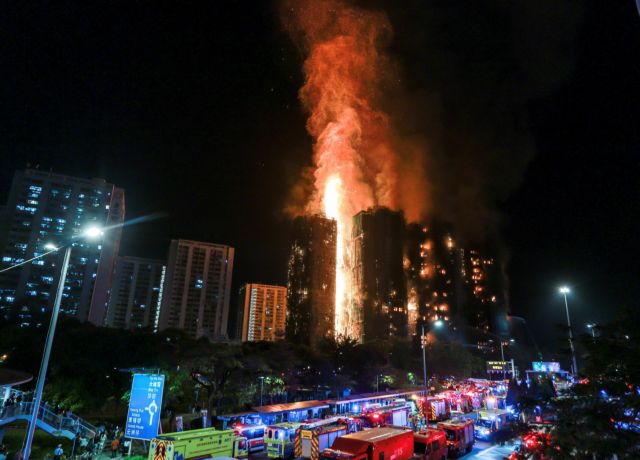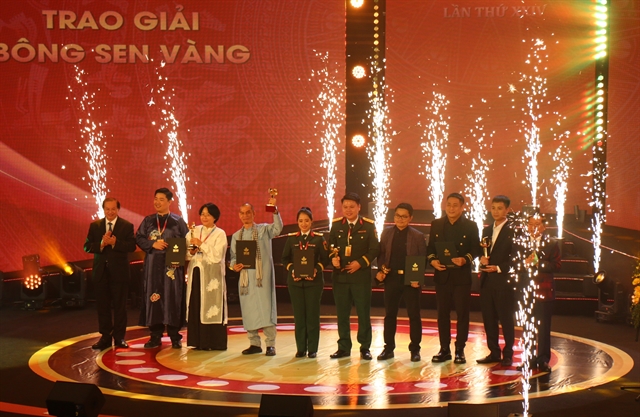 Life & Style
Life & Style
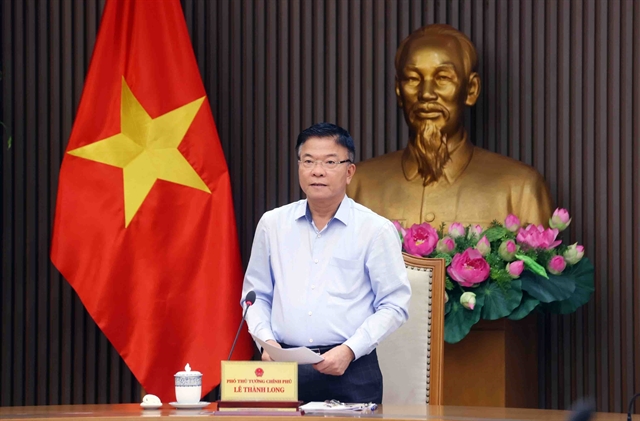
HÀ NỘI — From sacred to staged, the Dao community’s most important rite of passage, the lễ cấp sắc maturity ritual, will for the first time be reimagined through theatrical performance. The ceremony marks the transition to adulthood and is considered the most significant event in the life of every Dao ethnic man.
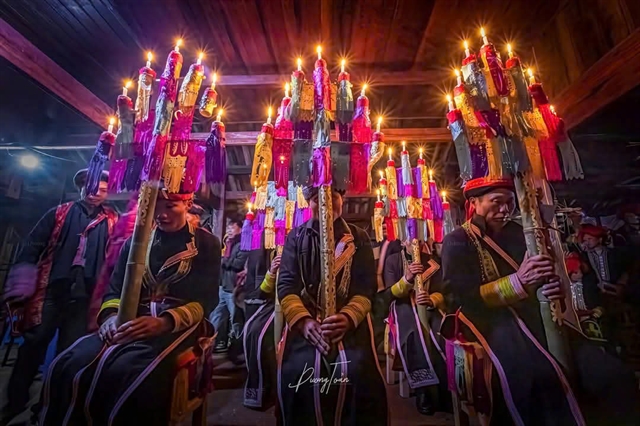
|
| Lễ cấp sắc, or the maturity ritual – a sacred rite marking the transition to adulthood and considered the most important ceremony in the life of every Dao ethnic man, will be reimagined through theatrical performance in the Thiêng (Sacred) show. |
The show, titled Thiêng (Sacred), will be staged at the Central Square of Sa Pa, a town renowned for its cultural richness and scenic beauty.
Through a blend of theatrical expression and spiritual symbolism, Thiêng explores the cultural identity, inner beliefs and core values of the Dao ethnic community in Việt Nam’s northern mountainous region.
It also reflects the elemental harmony of Earth, Water, Fire, Love and Faith – pillars of Dao cultural philosophy – while honouring the sacred essence of traditional rituals, especially lễ cấp sắc, a powerful emblem of maturity and moral integrity.
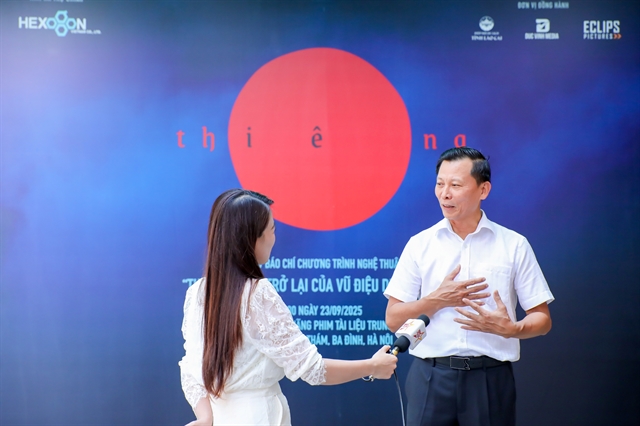
|
| Hà Văn Thắng, former Director of the Department of Tourism of Lào Cai Province and scriptwriter of Thiêng (Sacred), speaks to the media during a press conference in Hà Nội. |
Designed to preserve and promote the Dao people's cultural heritage, the show integrates music and dance with modern technologies such as lighting, stage effects and 3D mapping. It remains faithful to the original spirit of the culture while offering Dao individuals a meaningful opportunity to participate and share their stories through the language of art.
Script rooted in cultural immersion
The script of Thiêng was written by Hà Văn Thắng, former Director of the Department of Tourism of Lào Cai Province. It is the culmination of decades of research and close engagement with the Dao community in Sa Pa, where every song, ritual and garment embodies layers of cultural identity and spiritual belief.
Thắng, who has contributed to numerous dossiers for the preservation of intangible cultural heritage, noted that academic studies and policy documents often fall short of capturing the depth and humanity found in Dao folk knowledge.
“After witnessing many performances that, despite their effort, failed to reach the cultural ‘root,’ I felt compelled to create a work where the Dao people themselves are the storytellers, taking centre stage to narrate their heritage through art,” Thắng said during a media briefing in Hà Nội.
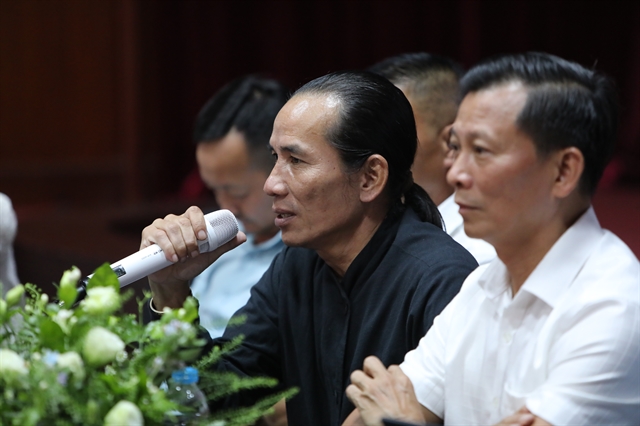
|
| Đặng Xuân Trường, director of the Thiêng (Sacred) show, shares insights with the media at a press conference in Hà Nội. |
The script has been brought to life under the artistic direction of Đặng Xuân Trường, known for his mastery of visual storytelling, light and installation art. Trường described Thiêng not merely as a script but as a richly woven cultural tapestry – an immersive space where music, movement and technology converge to evoke a world both real and mystical.
Rather than presenting a symbolic display, Trường aims to cultivate a living cultural practice.
“Preservation is not about display, it’s about allowing cultural bearers to perform within their own sacred space,” he said.
Collaborating with choreographers, artists and Red Dao artisans, the production is grounded in the lived experiences of those who carry the heritage in their veins.
Authentic voices and local participation
Scriptwriter Thắng emphasised that Dao artisans – guardians of the Dao script and rituals – share a common aspiration: to present their culture authentically, free from imposed interpretations. Their goal is not embellishment but respect.
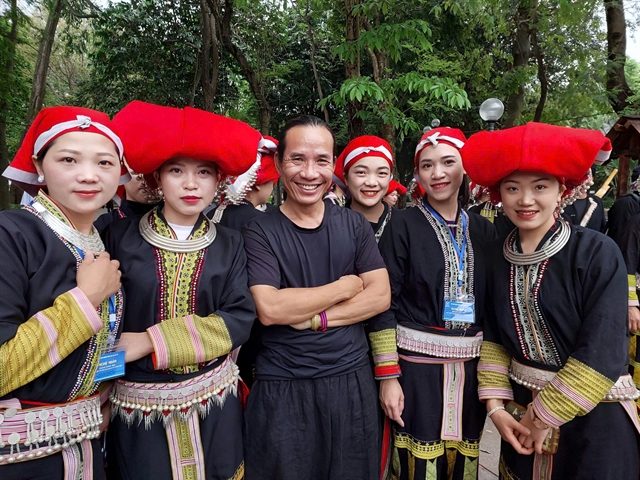
|
| Director Đặng Xuân Trường poses with Dao ethnic performers who will take part in the Thiêng (Sacred) show. Photos courtesy of Hexogon Vietnam |
Sixty Dao residents, alongside 20 artists from the Lào Cai Provincial Ethnic Art Troupe, have spent a year preparing to showcase the essence of their culture on stage. Director Trường said that involving local performers not only enhances authenticity but also fosters pride and a deeper understanding of cultural preservation.
To ensure cultural integrity, all costumes featured in Thiêng are traditional garments of the Red Dao people in Sa Pa, including ceremonial attire worn by shamans, brides, grooms and participants in the lễ cấp sắc ritual. Rather than using rented costumes, performers collaborate with Dao artisans to craft and prepare their own garments.
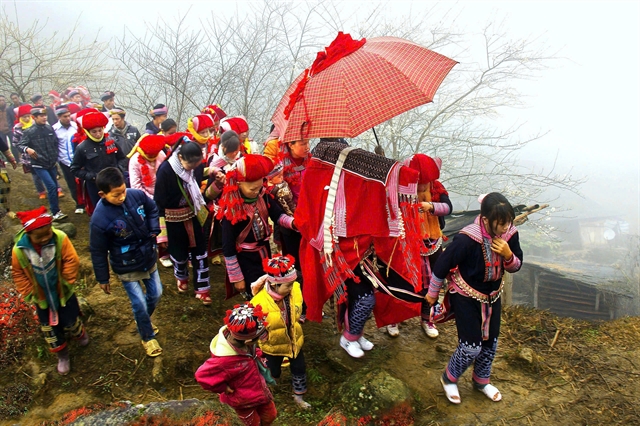
|
| Thiêng (Sacred) delves into the cultural identity, spiritual beliefs, and core values of the Dao ethnic community in northern Việt Nam. |
Props used in the performance are authentic tools, instruments and everyday objects familiar to the Dao community, reflecting their natural environment and daily life.
The musical score blends traditional instruments with Dao folk music, including páo dung melodies, riddles, proverbs and ceremonial chants. Together, these elements evoke the spiritual and cultural landscape of the Dao people, resonating with the spirit of the mountains and forests.
In addition to the premiere of Thiêng on November 7 and 14, the show Vũ Điệu Dưới Trăng (The Dance under the Moonlight), originally performed during Sa Pa’s 120th anniversary in 2023, will be re-staged.
Featuring 200 performers from ethnic groups including Mông, Dao, Tày, Giáy and Xa Phó, the production vividly portrays the cultural richness of the region. It will be performed on November 8 and 15 at the same venue in Sa Pa’s Central Square. — VNS



